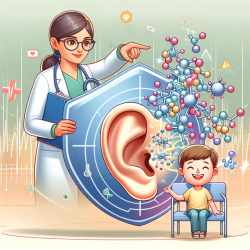The complexities of cognitive-communication deficits following a closed head injury (CHI) present significant challenges for rehabilitation professionals. The multifaceted nature of these impairments, which span across cognitive, executive, and linguistic domains, necessitates a nuanced approach to therapy. Drawing from the seminal work of Hartley and Griffith on A Functional Approach to the Cognitive-Communication Deficits of Closed Head-Injured Clients, this blog explores strategies to enhance therapy effectiveness for individuals with CHI by integrating research findings into practice.
CHI can lead to a wide array of neurobehavioral deficits, significantly impacting an individual's communication abilities. Traditional therapy approaches often focus on isolated cognitive or linguistic skills within a clinical setting. However, the functional approach advocated by Hartley and Griffith emphasizes the importance of real-life outcomes and everyday communication needs over discrete component skills.
Understanding the Functional Approach
The functional approach is characterized by its focus on adaptive behaviors and real-life communication needs. It diverges from traditional methods by prioritizing:
- Everyday activities and connected speech over isolated words or grammatical structures.
- Natural contexts for assessment and therapy, reflecting the individual's actual communication environments.
- The broad impact of cognitive-communicative disorders, including psychosocial and cognitive factors, alongside linguistic skills.
- Outcomes such as adequacy and appropriateness of communication, rather than mere accuracy or completeness.
This approach aligns therapy goals with the individual's specific life roles and communication demands, thereby enhancing the relevance and applicability of therapeutic interventions.
Implementing the Functional Approach in Therapy
Adopting a functional approach in cognitive-communication therapy involves several key strategies:
Comprehensive Needs Assessment
Begin with a thorough assessment of the individual's daily communication needs, roles, and environments. This personalized assessment guides the identification of functional limitations and the setting of relevant therapy goals.
Real-Life Therapy Tasks
Select therapy tasks and materials that mirror the individual's real-life communication demands. For example, use authentic materials such as menus, schedules, or work emails, depending on the individual's specific needs.
Enhancing Everyday Communication Skills
Focus on improving pragmatic skills such as turn-taking, topic maintenance, and conversational repair within naturalistic settings. Encourage practice in a variety of social contexts to promote generalization of skills.
Building Compensatory Strategies
Develop and reinforce strategies that enable individuals to compensate for persisting deficits. This might include teaching the use of technology aids, note-taking strategies, or visual schedules to support memory and organization.
Collaboration and Generalization
Work closely with family members, educators, and other professionals to ensure that therapy goals are integrated across the individual's daily activities and environments. This collaborative approach supports the generalization of skills beyond the therapy setting.
Encouraging Further Research and Professional Development
While the functional approach offers a promising direction for enhancing cognitive-communication therapy outcomes, ongoing research and professional development are crucial. Practitioners are encouraged to engage with current research, participate in professional forums, and pursue continuing education opportunities to stay abreast of evolving best practices.
In conclusion, the functional approach to cognitive-communication therapy, as detailed by Hartley and Griffith, emphasizes the importance of tailoring therapy to the individual's real-life communication needs and environments. By integrating these principles into practice, therapists can enhance the relevance and effectiveness of their interventions, ultimately supporting individuals with CHI in achieving their communication goals and improving their quality of life.
To read the original research paper, please follow this link: A Functional Approach to the Cognitive-Communication Deficits of Closed Head-Injured Clients.










